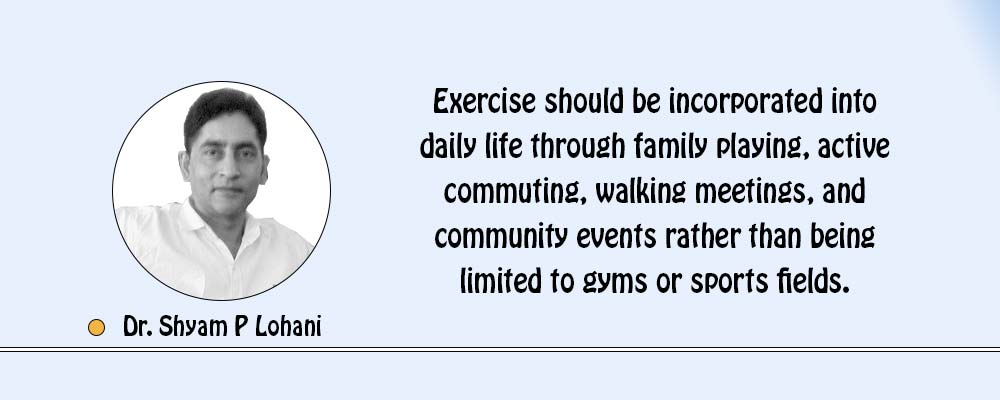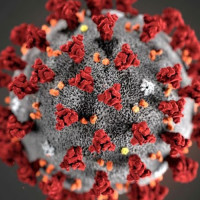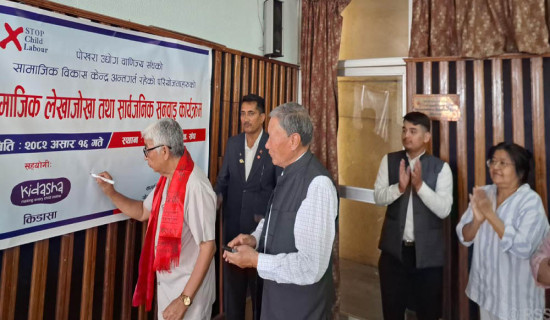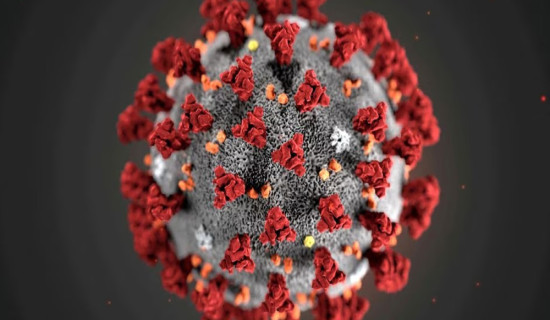- Tuesday, 1 July 2025
Preventing Non-communicable Diseases
Around 74 per cent of mortality worldwide is linked to non-communicable diseases (NCDs) such as cancer, diabetes, cardiovascular disease, and chronic respiratory conditions, according to the World Health Organisation. Particularly in low- and middle-income nations, despite not being contagious, noncommunicable diseases (NCDs) have turned into a hidden pandemic that has a substantial impact on healthcare systems, economic productivity, and quality of life. Physical inactivity continues to be one of the most significant and modifiable risk factors, although a variety of factors have a role in the development of NCDs.
Technology advancements have lessened the need for movement in our daily lives, hence, physical inactivity has into a serious public health concern in the world. A sedentary lifestyle characterised by extended hours spent sitting at workstations, increased screen time, and little physical activity has been linked to obesity and metabolic problems. Therefore, we cannot overlook the direct link between declining physical activity and rising NCD prevalence.
Importance
Numerous studies have proved that physical activity is clearly important for controlling and preventing noncommunicable diseases (NCDs). Frequent moderate-to-intense exercise enhances insulin sensitivity, decreases blood pressure, improves cardiovascular health, and aids in maintaining a healthy weight. Adults should engage in at least 150–300 minutes of moderate-intensity aerobic activity or 75–150 minutes of vigorous-intensity aerobic activity per week, according to the American Heart Association and the World Health Organisation. However, a significant proportion of the world's population does not meet these recommendations.
A sedentary lifestyle is associated with an increased risk of Type 2 diabetes, which affects millions of people worldwide. Frequent exercise enhances the body's capacity to use insulin efficiently and helps control blood glucose levels. Exercise strengthens the heart muscle, enhances circulation, and helps control cholesterol levels in the case of heart disease, the leading cause of death worldwide. Similarly, studies have indicated that physical activity can reduce risk and promote recovery during and after treatment, and that inactivity has been associated with certain malignancies, including breast and colon cancer.
Regular activity is also beneficial for mental health, which is sometimes neglected in talks of NCDs. Exercise improves mood and lessens the symptoms of anxiety and sadness by releasing endorphins and neurotransmitters like serotonin. Because of its comprehensive effects on the physical, metabolic, and psychological levels, physical activity is positioned as not only a viable alternative but also a need in the fight against non-communicable diseases.
People are impacted by urbanisation, a lack of open spaces, and inadequate infrastructure. Rapid urban development has resulted in communities built for vehicles rather than people in many emerging nations, making it hazardous and challenging to walk or cycle. Furthermore, the worldwide inactivity epidemic is exacerbated by work cultures that place a higher priority on long hours than on well-being, and schools that value academic rigor over physical education.
Ironically, sedentary lives could be reversed by the same technology advancements that have led to them. Self-monitoring has been promoted and exercise routines have become more accessible to all due to wearable fitness trackers, smartphone applications, and online training platforms. Social media-powered public health initiatives have the potential to reach millions of people, increasing awareness and igniting local movements for active living.
In addition to investing in public parks and recreational amenities, governments and urban planners must give priority to infrastructure for active transportation, such as bike lanes and pedestrian-friendly sidewalks. Workplaces must promote mobility through design and culture, and schools must incorporate physical activity into regular activities.
The health sector alone cannot lead the physical activity-based fight against NCDs. Education, transportation, urban development, and sports must all be involved in this multi-sectoral strategy. While urban planners can build cities that encourage movement, schools can play a fundamental role by fostering healthy behaviors from an early age. Employers can also play a part by providing facilities that promote physical activity, flexible scheduling, and wellness initiatives.
WHO has produced frameworks like the Global Action Plan on Physical Activity 2018–2030, which seeks to eliminate physical inactivity by 15 per cent by 2030. However, local and national implementation is still uneven. To make these goals a reality, political will, sufficient finance, and ongoing public involvement are essential. Cultural differences are arguably one of the biggest obstacles. Physical activity is viewed as voluntary or enjoyable rather than necessary in many civilizations. It will take persistent messaging, role models, and the incorporation of physical activity into cultural narratives to change this mindset.
Exercise should be incorporated into daily life through family playing, active commuting, walking meetings, and community events rather than being limited to gyms or sports fields. Although difficult, changing behavior is not impossible. People are more likely to maintain active lifestyles when they live in surroundings that make choosing healthily the easy option. Therefore, in addition to providing information, public health policies must also enable and motivate action.
Affordable strategies
Physical activity is one of the most effective and affordable strategies for controlling and preventing non-communicable diseases, according to strong and convincing data. However, it is nonetheless underutilised, frequently disregarded in health agendas, and not sufficiently supported by institutions and systems.
It will take immediate, concerted efforts from all societal levels and sectors to reverse the global trend of physical inactivity. As a fundamental component of health, physical exercise must be emphasised in everything from the layout of our cities to the scheduling of our workdays, from early childhood education to elder care. Only then will we have a chance to stop the spread of NCDs and create a future where everyone can enjoy longer, healthier lives.
(Dr. Lohani is the executive director at the Health Concern. lohanis@gmail.com)















